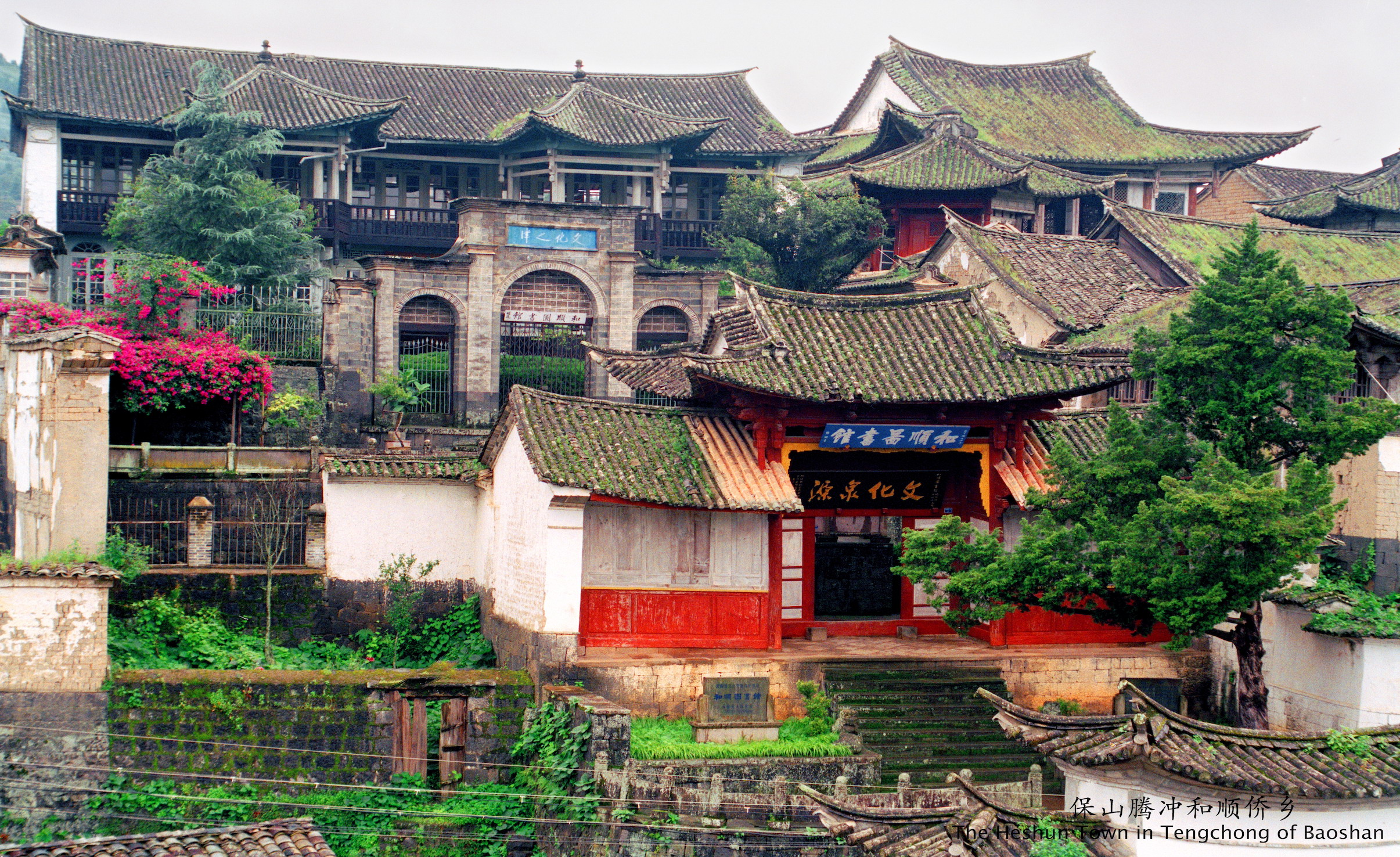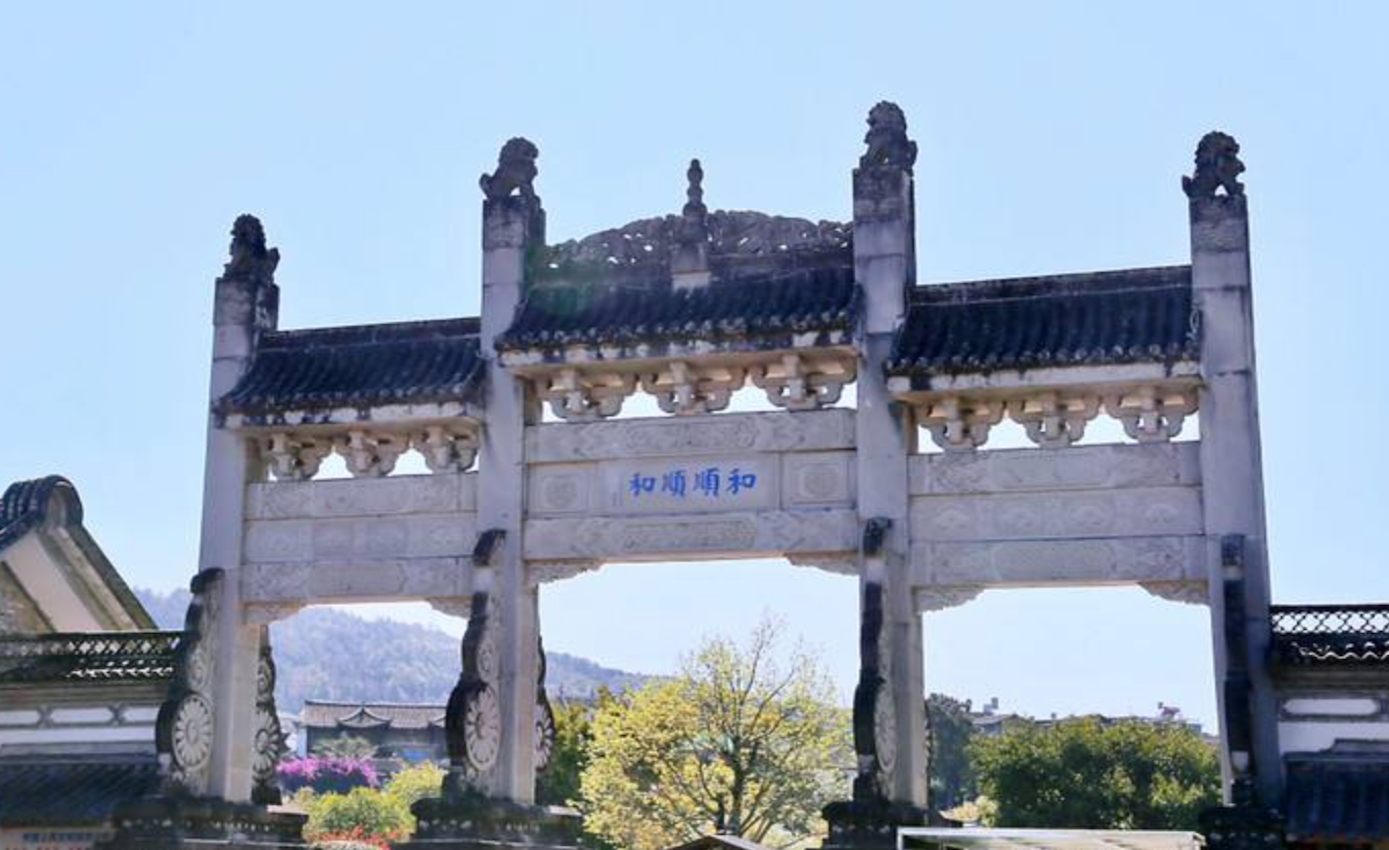
The Heshun Ancient Village
Three kilometers west of the county seat of Tengchong lies the township of Heshun-which used to be called “Yanwendun Villiage”. Located by a river, the village got the name “Heshun”(along the river). This name is also derived from the verse “The rising clods herald auspicious future and the gentle breeze brings peace and harmony”. So the name “Heshun” expresses local people’s wishes for a happy life.

For many years the Southern Silk Route has connected China with Southeast Asia, South Asia, and Europe. Tengchong was a vital communications center of this route, Heshun enjoyed many conveniences for business. It was a standard practice that men should go abroad to make a fortune. From the Ming Dynasty, a growing number of Heshun people went to Myanmar to trade and seek a livelihood. In the early 20th century, more people went to Japan, Europe, America, Hong Kong areas for a living or further study. That’s why Heshun is known as a famous hometown of overseas Chinese.
Walking along the roads paved with slabs, visitors can fully appreciate the beautiful scenery and rich culture of this little town.
At the entrance to the town stands a splendid memorial archway, and there is a river that flows by the town from the east to the west. Over the river are two arch stone bridges looking like two rainbows called “Shuanghong Bridges” (Double Rainbow Bridges). the scenery around the bridges is picturesque, and locals often go there for an outing in spring and for appreciating the moon in autumn.

On the bridges the visitors can see a lotus pond, and not far from the bridges is Heshun Library, the earliest and largest rural library in China. The old library was pulled down and a new library was erected on its site in 1938 with both West and Chinese styles. The library is a state-protected relic site as well.
Architecture is another feature of Heshun. There is a great variety of structures such as ancestral temples, memorial archways, platforms, lotus ponds, pavilions, screen walls, and stone railings. Most of them were built in Qing Dynasty. Among them, ancestral temples are the most magnificently constructed. There are altogether eight temples and eight families in the town, of which those of Cun, Liu, and Li families are the most representative.
What impresses visitors most in Heshun can be summed up in the word “harmony” - harmony between man and nature, harmony between Chinese and Western cultures, and harmony between the past and resent. It is very worth visiting.
If there's any copyright issue involved, please contact us to delete.



